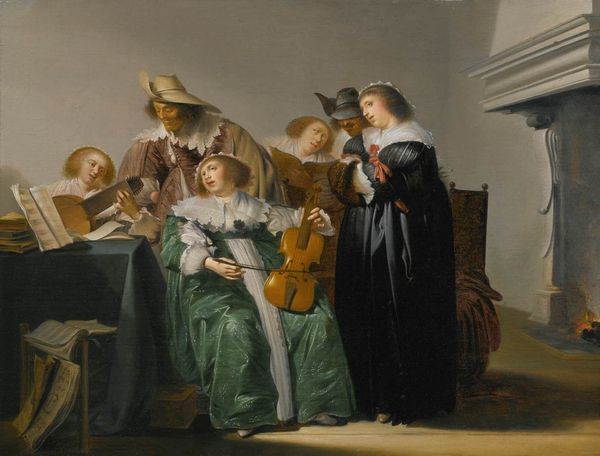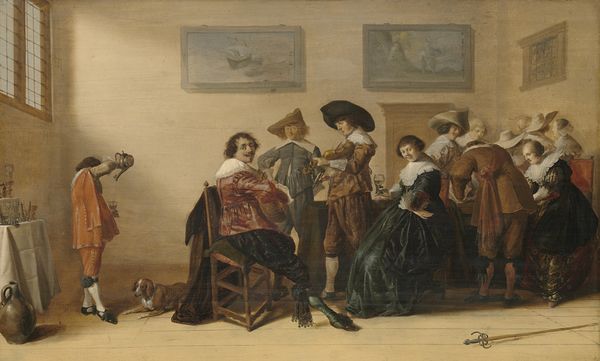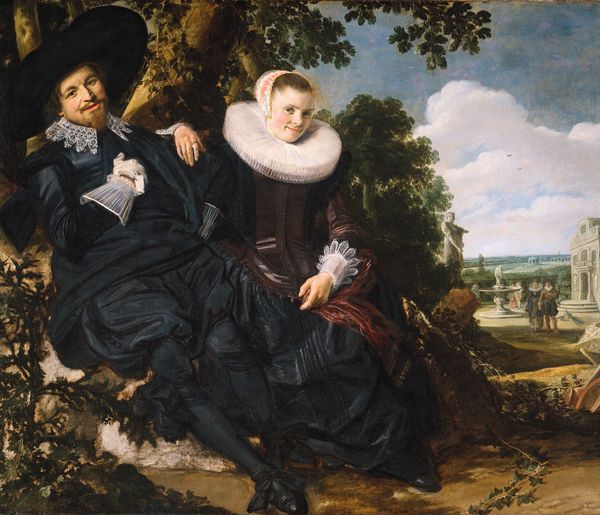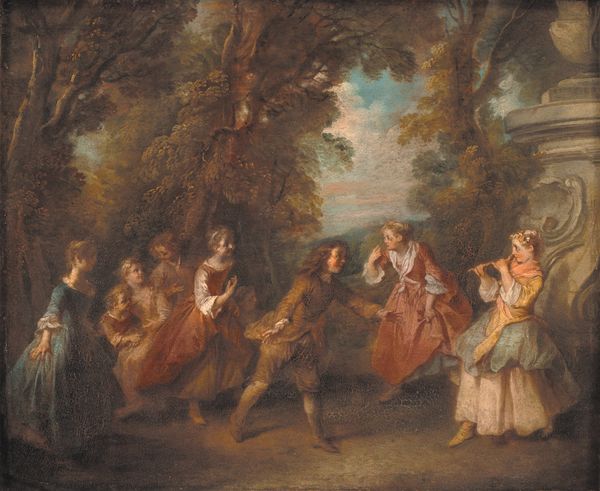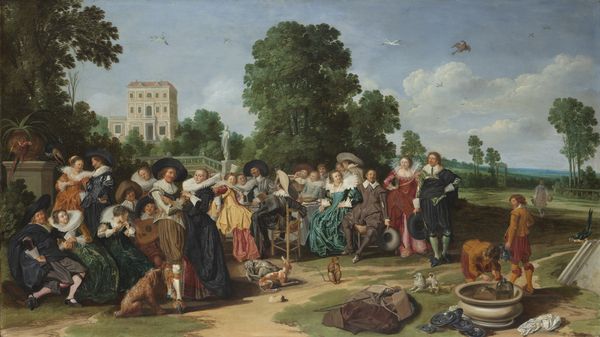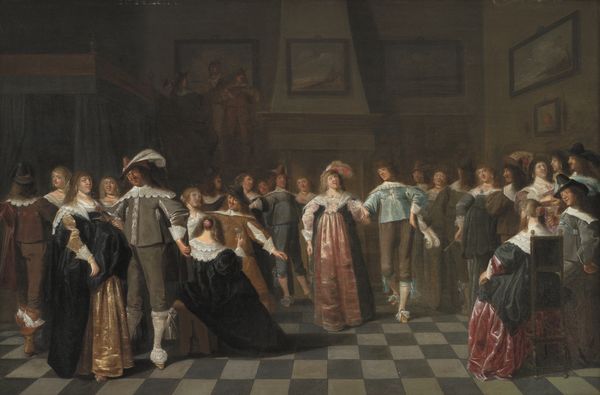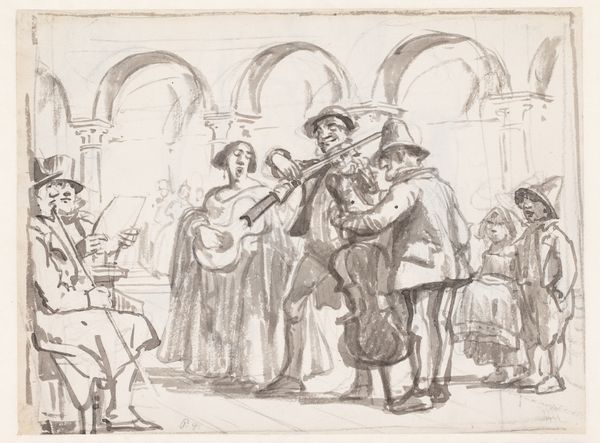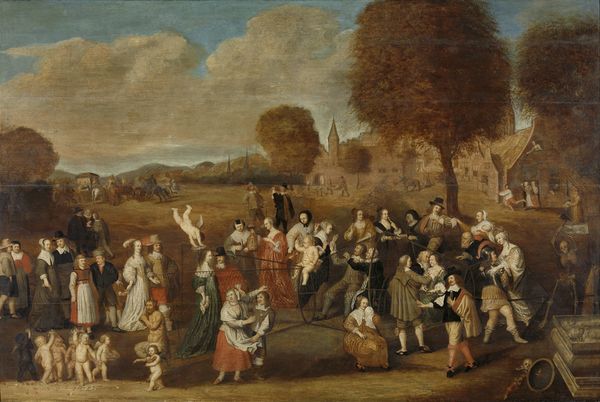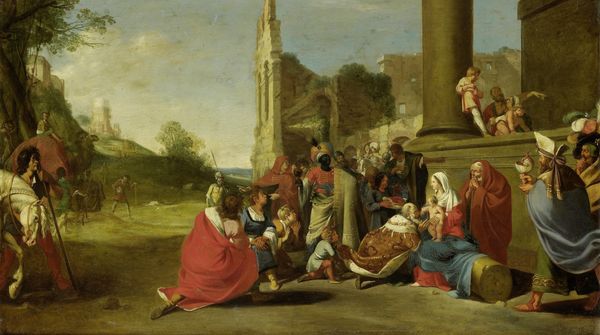
oil-paint
#
portrait
#
baroque
#
dutch-golden-age
#
oil-paint
#
figuration
#
oil painting
#
group-portraits
#
genre-painting
#
portrait art
Dimensions: overall: 38.7 × 51.5 cm (15 1/4 × 20 1/4 in.)
Copyright: National Gallery of Art: CC0 1.0
Curator: Ah, the sheer exuberant joy in Dirck Hals's "Merry Company on a Terrace"! Painted around 1625 using oil paints, it's like a perfectly captured slice of 17th-century revelry. Editor: Yes, the figures positively vibrate with life! There's a wonderful lightness despite the formal dress. It's a symphony of texture and saturated hues -the velvety fabrics, those incredible hats, the light catching on the cello's varnish... but beneath that is perhaps some tension between the extravagance and... well, something. Curator: Oh, I love that you feel the tension! It’s precisely that sense of fleeting pleasure that makes it so engaging. Each character, seemingly lost in their own musical world, yet subtly aware of being observed by both the artist and us centuries later. There is that younger child though that seems lost in another activity though. Editor: You’re right, they’re posing for an unseen audience as much as enjoying themselves. The placement, the terrace, and those dramatic costumes: it all recalls theatrical stages. Baroque art often features people playing different roles in real life and within their portrait. It gives me a glimpse into a highly stylized and theatrical society, but also asks questions about authenticity and identity. Are they showing off or simply comfortable within social constraints? Curator: It also reflects the emerging wealth and merchant class during the Dutch Golden Age. The details on the ruffs, for instance, show that meticulous craftsmanship – it symbolizes their financial standing, their status. I see it as almost a self-portrait of a culture defining itself through leisure and art. But what symbol speaks most powerfully to you here? Editor: It's subtle but the lute strikes me most. Lutes and other instruments symbolized harmony, not just of sound, but of social order, of love and partnership. The fact that these players are literally instruments of merriment makes them, in a way, tools or ornaments as well as individuals. They have their roles to play, visually and musically, and create one pleasing impression through joint performance. Curator: Beautifully said! I now sense their interdependence. When first viewing, I had seen them only as unique persons. "Merry Company on a Terrace", so then, as both individual story and a wider reflection on an era—a playful melody concealing a subtle meditation on human nature and social roles.
Comments
No comments
Be the first to comment and join the conversation on the ultimate creative platform.
